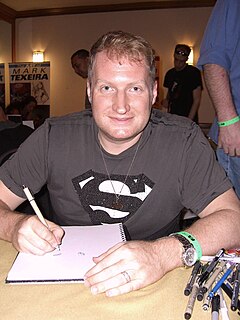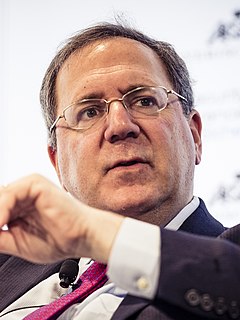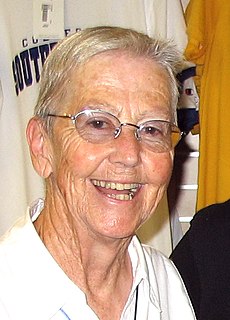
A weapon of mass destruction (WMD) is a chemical, biological, radiological, nuclear, or any other weapon that can kill and bring significant harm to numerous individuals or cause great damage to artificial structures, natural structures, or the biosphere. The scope and usage of the term has evolved and been disputed, often signifying more politically than technically. Originally coined in reference to aerial bombing with chemical explosives during World War II, it has later come to refer to large-scale weaponry of warfare-related technologies, such as chemical, biological, radiological, or nuclear warfare.

World War III or the Third World War, often abbreviated as WWIII or WW3, are names given to a hypothetical worldwide large-scale military conflict subsequent to World War I and World War II. The term has been in use since at least as early as 1941. Some apply it loosely to limited or more minor conflicts such as the Cold War or the war on terror. In contrast, others assume that such a conflict would surpass prior world wars in both scope and destructive impact.

The Bulletin of the Atomic Scientists is a nonprofit organization concerning science and global security issues resulting from accelerating technological advances that have negative consequences for humanity. The Bulletin publishes content at both a free-access website and a bi-monthly, nontechnical academic journal. The organization has been publishing continuously since 1945, when it was founded by former Manhattan Project scientists as the Bulletin of the Atomic Scientists of Chicago immediately following the atomic bombings of Hiroshima and Nagasaki. The organization is also the keeper of the symbolic Doomsday Clock, the time of which is announced each January.

The arms industry, also known as the arms trade, is a global industry which manufactures and sells weapons and military technology. It consists of a commercial industry involved in the research and development, engineering, production, and servicing of military material, equipment, and facilities. Arms-producing companies, also referred to as arms dealers, or as the military industry, produce arms for the armed forces of states and for civilians. Departments of government also operate in the arms industry, buying and selling weapons, munitions and other military items. An arsenal is a place where arms and ammunition - whether privately or publicly owned - are made, maintained and repaired, stored, or issued, in any combination. Products of the arms industry include guns, artillery, ammunition, missiles, military aircraft, military vehicles, ships, electronic systems, military communications, night-vision devices, holographic weapon sights, laser rangefinders, laser sights, hand grenades, landmines and more. The arms industry also provides other logistical and operational support.

Deterrence theory refers to the scholarship and practice of how threats or limited force by one party can convince another party to refrain from initiating some other course of action. The topic gained increased prominence as a military strategy during the Cold War with regard to the use of nuclear weapons and is related to but distinct from the concept of mutual assured destruction, which models the preventative nature of full-scale nuclear attack that would devastate both parties in a nuclear war. The central problem of deterrence revolves around how to credibly threaten military action or nuclear punishment on the adversary despite its costs to the deterrer.
Cyberterrorism is the use of the Internet to conduct violent acts that result in, or threaten, the loss of life or significant bodily harm, in order to achieve political or ideological gains through threat or intimidation. Acts of deliberate, large-scale disruption of computer networks, especially of personal computers attached to the Internet by means of tools such as computer viruses, computer worms, phishing, malicious software, hardware methods, programming scripts can all be forms of internet terrorism. Cyberterrorism is a controversial term. Some authors opt for a very narrow definition, relating to deployment by known terrorist organizations of disruption attacks against information systems for the primary purpose of creating alarm, panic, or physical disruption. Other authors prefer a broader definition, which includes cybercrime. Participating in a cyberattack affects the terror threat perception, even if it isn't done with a violent approach. By some definitions, it might be difficult to distinguish which instances of online activities are cyberterrorism or cybercrime.
James Swallow is a British author. A BAFTA nominee and a New York Times, Sunday Times and Amazon #1 best-seller, he is the author of several original books and tie-in novels, as well as short fiction, numerous audio dramas and video games.

Ethan Daniel Van Sciver is an American comics artist and social media personality. He is known for illustrating or drawing covers for a number of superhero titles in the 2000s, primarily for DC Comics, including Green Lantern and The Flash: Rebirth, and New X-Men for Marvel Comics. In the late 2010s he became known for his "ComicArtistPro Secrets" channel on YouTube, through which he became a central figure in Comicsgate.

Cyberwarfare is the use of cyber attacks against an enemy state, causing comparable harm to actual warfare and/or disrupting vital computer systems. Some intended outcomes could be espionage, sabotage, propaganda, manipulation or economic warfare.

David E. Sanger is an American journalist who is the chief Washington correspondent for The New York Times. A 1982 graduate of Harvard College, Sanger has been writing for the Times for 30 years covering foreign policy, globalization, nuclear proliferation, and the presidency.
There are many claims that the Central Intelligence Agency (CIA) has repeatedly intervened in the internal affairs of Iran, from the Mossadegh coup of 1953 to the present time. The CIA is said to have collaborated with the last Shah, Mohammad Reza Pahlavi. Its personnel may have been involved in the Iran-Contra affair of the 1980s. More recently in 2007-8 the CIA were claimed to be supporting the Sunni terrorist group Jundallah against Iran, but these claims were refuted by a later investigation.
Cyberwarfare is the use of computer technology to disrupt the activities of a state or organization, especially the deliberate attacking of information systems for strategic or military purposes. As a major developed economy, the United States is highly dependent on the Internet and therefore greatly exposed to cyber attacks. At the same time, the United States has substantial capabilities in both defense and power projection thanks to comparatively advanced technology and a large military budget. Cyber warfare presents a growing threat to physical systems and infrastructures that are linked to the internet. Malicious hacking from domestic or foreign enemies remains a constant threat to the United States. In response to these growing threats, the United States has developed significant cyber capabilities.
Stuxnet is a malicious computer worm first uncovered in 2010 and thought to have been in development since at least 2005. Stuxnet targets supervisory control and data acquisition (SCADA) systems and is believed to be responsible for causing substantial damage to the nuclear program of Iran. Although neither country has openly admitted responsibility, the worm is widely understood to be a cyberweapon built jointly by the United States and Israel in a collaborative effort known as Operation Olympic Games. The program, started during the Bush administration, was rapidly expanded within the first months of Barack Obama's presidency.
Informatized warfare of China is the implementation of information warfare (IW) within the People's Liberation Army (PLA) and other organizations of the Chinese Communist Party (CCP). Laid out in the Chinese Defence White Paper of 2008, informatized warfare includes the utilization of information-based weapons and forces, including battlefield management systems, precision-strike capabilities, and technology-assisted command and control (C4ISR). However, some media and analyst report also uses the term to describe the political and espionage effort from the Chinese state.
Operation Olympic Games was a covert and still unacknowledged campaign of sabotage by means of cyber disruption, directed at Iranian nuclear facilities likely by the United States and Israel. As reported, it is one of the first known uses of offensive cyber weapons. Started under the administration of George W. Bush in 2006, Olympic Games was accelerated under President Obama, who heeded Bush's advice to continue cyber attacks on the Iranian nuclear facility at Natanz. Bush believed that the strategy was the only way to prevent an Israeli conventional strike on Iranian nuclear facilities.

Megan Gillespie Rice S.H.C.J. was an American nuclear disarmament activist, Catholic nun, and former missionary. She was notable for illegally entering the Y-12 National Security Complex in Oak Ridge, Tennessee, at the age of 82, with two fellow activists of the Transform Now Plowshares group. The action was a nuclear disarmament protest referred to as "the biggest security breach in the history of the nation's atomic complex."
A cyberattack is any offensive maneuver that targets computer information systems, computer networks, infrastructures, or personal computer devices. An attacker is a person or process that attempts to access data, functions, or other restricted areas of the system without authorization, potentially with malicious intent. Depending on the context, cyberattacks can be part of cyber warfare or cyberterrorism. A cyberattack can be employed by sovereign states, individuals, groups, societies or organisations and it may originate from an anonymous source. A product that facilitates a cyberattack is sometimes called a cyber weapon. Cyber attacks have increased with an alarming rate for the last few years
Perfect Weapon or The Perfect Weapon may refer to:

The Perfect Weapon is a 2020 documentary film directed by John Maggio produced by Ark Media and HBO Documentary Films. Based on the book of the same name by David E. Sanger, the film details the rise of cyberwarfare and cyber spying on an international scale. The film premiered on October 16, 2020 on HBO, including streaming on HBO Max.
2021 Natanz incident refers to a suspected attack on the Natanz nuclear site in Iran. The Natanz nuclear facility is placed in the wilderness in the central province of Isfahan, Iran. This site is scouted by the International Atomic Energy Agency (IAEA), the U.N. nuclear watchdog.










